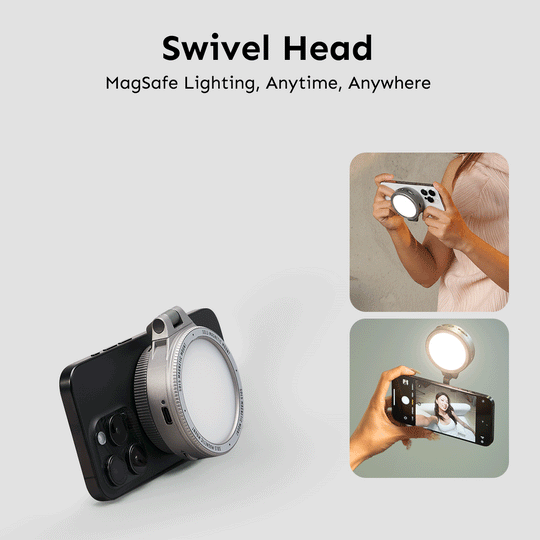Unleash Your Creativity: Transform Your Content with the Perfect Lighting!
Lighting is the unsung hero of content creation—often overlooked yet incredibly vital for captivating visual storytelling. Whether you're a vlogger, photographer, or live streamer, the right lighting can elevate your content from ordinary to extraordinary. Good lighting enhances the mood, adds depth, and holds the audience's attention, making it a crucial element in your creative toolkit. From natural light streaming through a window to the soft glow of artificial sources, understanding how to manipulate light can make all the difference in your work. In this article, we’ll explore everything you need to know about content creator lighting, ensuring you can illuminate your projects with confidence.

Understanding Lighting Basics
Before diving into the specifics of lighting equipment, it’s essential to grasp the fundamental concepts of lighting. At its core, lighting can be categorized into two types: natural and artificial. Natural lighting comes from the sun and can create stunning effects, but it's often unpredictable. On the other hand, artificial lighting, which includes lamps and studio lights, offers greater control over your environment. Another crucial aspect is color temperature, measured in Kelvin. Warmer light (lower Kelvin) creates a cozy ambiance, while cooler light (higher Kelvin) mimics daylight, perfect for achieving a professional look. Lastly, consider the intensity of your lights; too harsh can create unflattering shadows, while too soft could wash out detail. Understanding these elements is vital as they directly influence the mood and quality of your content.
Types of Lighting Equipment
Now that you’re familiar with the basics, let's explore the various types of lighting equipment that can enhance your content creation. Softboxes are popular for their ability to diffuse light evenly, creating a soft, flattering illumination ideal for portraits and videos. Ring lights, often favored by beauty vloggers, provide even lighting and reduce shadows, making them great for close-up shots. Meanwhile, LED panels offer versatility with adjustable brightness and color temperature, suitable for both indoor and outdoor shooting. Reflectors are another essential tool, bouncing light to fill in shadows and highlight features without the need for additional power sources. Each type of lighting equipment serves a unique purpose, and selecting the right one can significantly impact your final product.
Choosing the Right Lighting for Your Content
Choosing the appropriate lighting setup is critical to achieving your desired effect. Consider the type of content you’re creating; for instance, indoor shooting may require a different approach than outdoor settings. In a compact space, softboxes can help create a controlled environment, while outdoor shooting might benefit from the natural light, supplemented with reflectors to direct sunlight where needed. The size of your space also plays a role; larger areas may require multiple light sources to avoid dark corners. Additionally, think about the mood you want to convey—bright, airy lighting can evoke happiness and energy, while dim, moody lighting can create drama and intensity. Taking these factors into account will help you curate a lighting setup that complements your creative vision.
Tips for Setting Up Your Lighting
Setting up your lighting requires careful consideration and a bit of experimentation. Start by positioning your main light at a 45-degree angle to your subject, which helps reduce harsh shadows. Be mindful of avoiding overhead lights that can create unflattering shadows on the face. If you’re using multiple light sources, balance them to prevent one side from being overly bright compared to the other. Testing your setup before recording is crucial; take a few test shots to see how the light interacts with your subject. Adjust as needed—sometimes a slight shift can make a significant difference. By fine-tuning your lighting setup, you’ll ensure your content is visually striking and engaging.
Key Takeaways for Effective Lighting
In conclusion, investing in the right lighting is essential for any content creator aiming to enhance their work. From understanding the basics of lighting to choosing the right equipment and setup, each step plays a crucial role in producing high-quality content that resonates with your audience. Remember, good lighting doesn’t just illuminate your subject; it tells a story and connects with viewers on a deeper level. As you embark on your creative journey, let the principles of effective lighting guide you toward creating captivating content that stands out in today’s crowded digital landscape.







